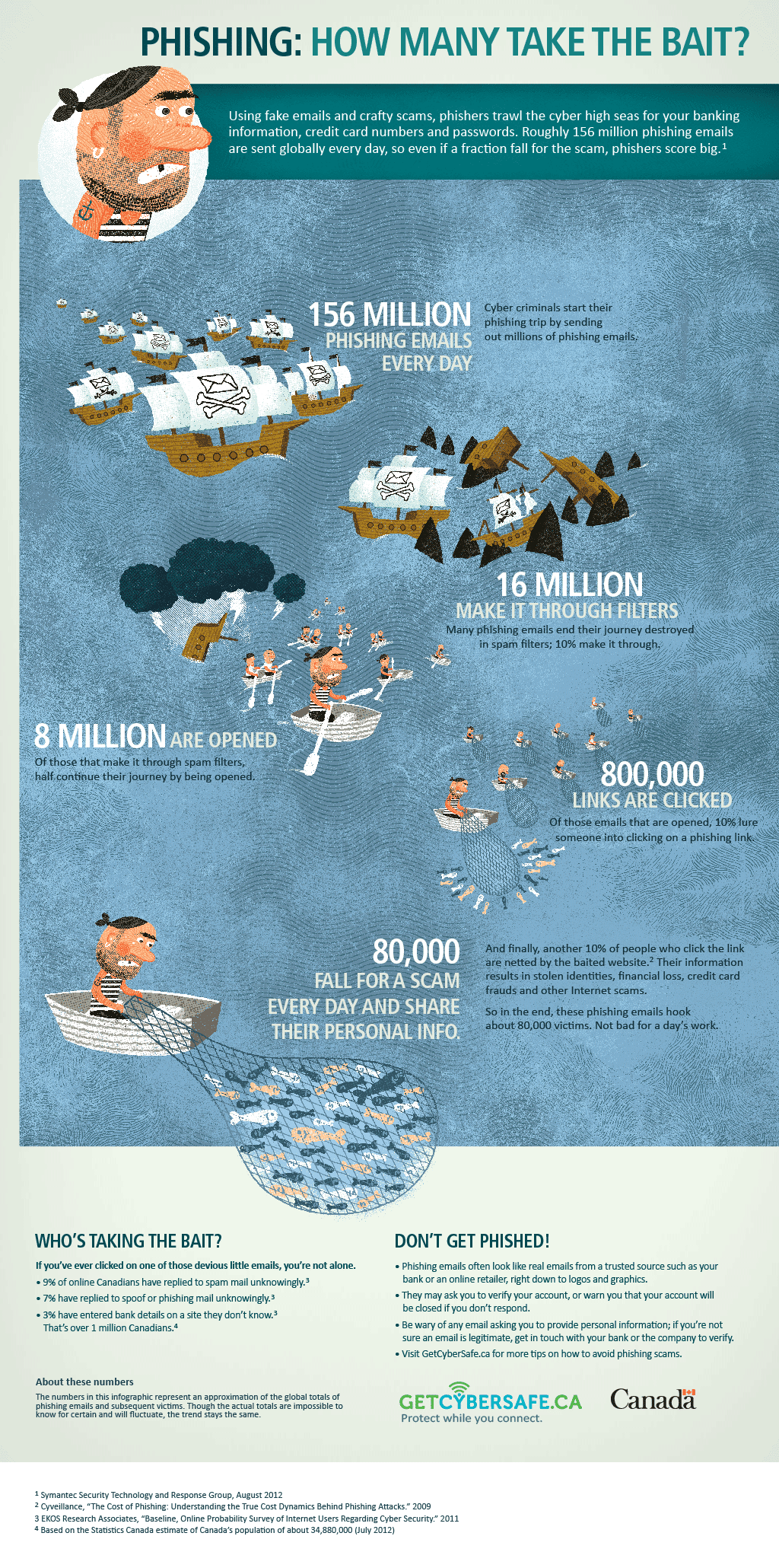Each year, tens of thousands of people get their identity hijacked and abused because they fell victim to some online scam that cheats its way into their personal information. The tactic is called phishing, and it is one of the most common ways for crackers to get control over your accounts and assets. Phishing is a blurry mess, at least if you ask the average Internet user. To them, phishing emails are hard to identify if they don’t get caught in their spam filter.
This has created a huge problem for both banks and online services. It’s easy for an Internet pro to spot phishing emails, but you have to remember, the average Internet user spends about 68 hours per month on the Internet, mostly on email and Facebook. So how can we beef up security to make sure we don’t fall for phishing emails?
The standard approach is to look at the credibility of the email. If you wonder why you received the email in the first place, you probably should dump it into the spam bin. Reading through it is not hazardous, it’s the clicking of links that causes problems. Usually phishing emails have plenty of bad grammar, and since they are generated automatically, they usually have weird numbers and sentences that just don’t make sense.
So why are these phishing emails even sent out in the first place? According to a new study presented by Get Cyber Safe in an infographic called Phishing: How Many Take The Bait?, there are about 156 million phishing emails sent out each day. That is a lot of emails, and we are all getting them. Our spam filters catch around 90% of them. That leaves 16 million phishing emails still making it into our visual view.
About half of those (8 million) are opened. Then we get to the real problem, 10% percent of the phishing emails opened actually have a link which someone clicks. That’s 800,000 emails per day that have the potential of ruining someone’s life. The thing is, out of those 800,000 emails, around 10% are received by people who actually fall for the scam and hand out their personal information without questioning the credibility of the email first. That’s a staggering 80,000 people who get their personal information hijacked each day!
Don’t be one of them. There are several ways to protect yourself from becoming a victim of phishing emails. Just do a search on Google (for example), and you will find tons and tons of guides which will help you identify these phishing emails. Apple has a really useful support article on their website which will give you all the information you need to adequately identify phishing emails before clicking any links whatsoever.
Phishing Emails & How Successful They Really Are
(Click Infographic To Enlarge)
Via: [Love Infographics]

COMMENTS